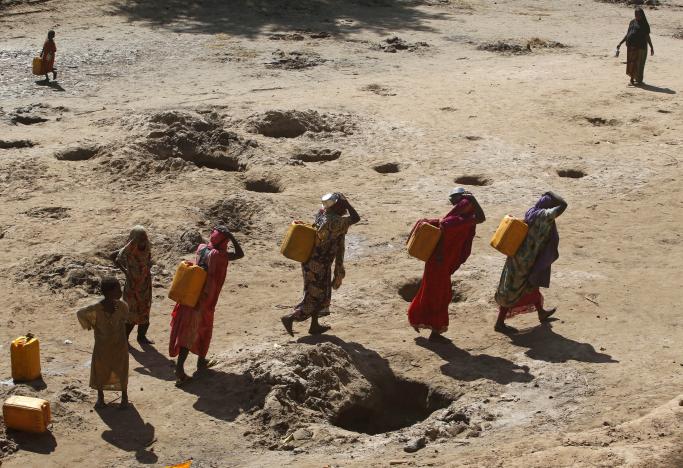Horn of Africa facing another drought as La Niña approaches, scientists warn


By Fauxile Kibet
The Horn of Africa and the East African regions are at a risk of another drought as the La Niña weather phenomenon sweeps across the region in the coming months, experts have warned.
According to a scientific report released during the 48th Greater Horn of Africa Climate Outlook Forum (GHACOF48) currently being held in Mombasa Kenya, there are indicators of a potential La Niña that may occur during the second quarter of 2018 in the region.
Experts who spoke during the conference called on all countries in the region to keenly monitor the situation so as to adequately formulate contingency plans to reduce the impact on the people living in the affected countries.
The report further indicates that the La Niña period will mostly be experienced by the IGAD countries which include; Djibouti, Ethiopia, Eritrea, Kenya, Somalia, the Sudan, South Sudan and Uganda.
La Niña, according to the experts could trigger severe hunger and lack of water for both humans and livestock and potentially increase conflict between different communities who will fight over scarce resources. There is also a likelihood of increased human and animal migration as they seek to flee from the raging drought.
Intergovernmental Authority on Development (IGAD) Climate Prediction and Applications Centre (ICPAC) director Guleid Artan warned Somalia will face extreme drought in the next few months.
“The situation in Somalia is dire. In South Sudan it’s more of conflict than droughts but we expect serious famine,” said Dr Artan.
Somalia is currently facing an ongoing drought which claims several lives and livestock last year as humanitarian agencies marshalled international funding to prevent an impending famine. The UN and other humanitarian agencies have said the Horn of Africa country is not yet off the hook as the drought persists into 2018.
At least half of the population (6.2 million people) is affected by the ongoing drought in Somalia.
La Niña episodes represent periods of below-average sea surface temperatures across the east-central Equatorial Pacific. Global climate La Niña impacts tend to be opposite those of El Niño impacts. In the tropics, ocean temperature variations in La Niña also tend to be opposite those of El Niño.
The meeting according to Kenya’s Environment and Forestry Principal Secretary Charles Sunkuli brought together experts from all IGAD member states with an aim of building a consensus on weather outlook before the long rains.
“I urge climate experts from IGAD member states which include Ethiopia, Somali, Burundi, Djibouti, Eritrea, Uganda, Sudan, South Sudan and Kenya to partner in addressing the weather challenges as climate information plays a critical role in the socio-economic development of any country.”
Kenya’s Meteorological Department however said that a full report on the impact of the forecast on Kenya will be released soon but noted that lower rain periods are likely to be experienced in the coming months.